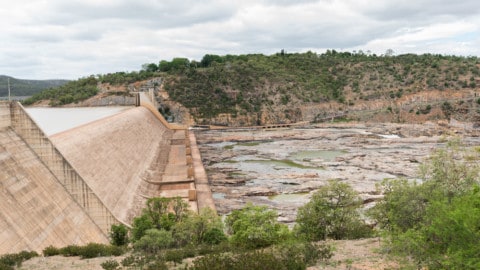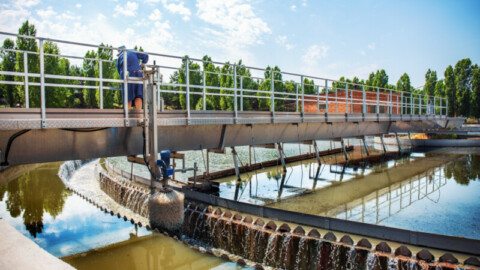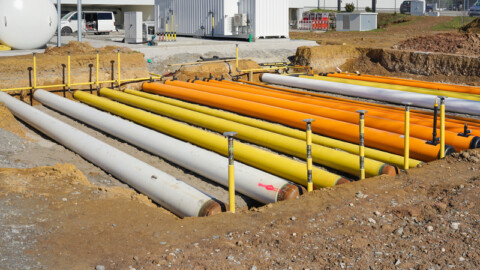By Steph Barker, Assistant Editor, Pump Industry
With temperatures continuing to soar across Australia and summer in full swing, bushfires are front of mind for many. To withstand this weather with the least amount of damage a robust, multilayered approach to disaster response is essential. Here, we take a look at the important role of distributed energy resources in disaster response and the critical role of pumps in powering these resources.
One of the biggest problems faced during natural disasters is the loss of critical energy-dependent services. Energy grids are often impacted by natural disasters, as they are not designed to withstand extreme weather conditions.
Powerlines can be easily taken out by fire and wind, while power generation sites can also be heavily impacted by flood and fire. If energy grids are not able to persevere through natural disasters, the knock-on effects to essential services that are critical to survival can be devastating.
These effects can be particularly devastating to rural and remote communities. Rural and remote communities often bear the brunt of natural disasters – they are likely to be closer to bushland and water sources, which can provide fuel for fire and flood. Rural and remote communities are also vulnerable to loss of electricity as they tend to be far away from energy centres, meaning that when the electricity supply is interrupted it can take much longer to reconnect.
The University of New South Wales (UNSW) developed the Energy Sustainability through Knowledge and Information Exchange and Sharing (ESKIES) project, funded by the NSW Reconstruction Authority’s Bushfire Community Resilience and Recovery Fund, in the wake of the Black Summer bushfires. The ESKIES project aims to increase understanding of the role of solar, batteries and other distributed energy resources (DER) in maintaining electricity supply to regional and rural communities during bushfires and other disruptions to the electricity grid.
UNSW ESKIES recently released a report on this subject, Energy Resilience in Bushfires and Extreme Weather Events. The report found that DER play a pivotal role during times of crisis, especially for rural and remote communities.
What are distributed energy resources?
DER essentially refers to any energy resources that do not rely on the standard electricity grid to provide power. The Australian Renewable Energy Agency explains, “DER is the name given to renewable energy units or systems that are commonly located at houses or businesses to provide power.
DER can also be referred to as ‘behind the meter’ resources, because the electricity is generated or managed ‘behind’ the electricity meter in the home or business. Common examples of DER include rooftop solar PV units, individual generators, battery storage, thermal energy storage, electric vehicles and chargers, smart meters, and home energy management technologies.”
The reason that DER play such a critical role in natural disaster management is that larger energy grids are much more likely to be affected by extreme weather events. Grid outages affect communities in multiple ways, such as the loss of basic services like water, refrigeration and sewage, as well as loss of communication. Timely, accurate communication is one of the most important aspects of disaster management, particularly for safety and mitigating impacts to people and property.
Pumping up the power
Utilising DER during bushfires and other natural disasters is a complex task. Regional and rural areas are much more likely to be impacted by natural disasters than major cities and urban areas – and while this can present many challenges, these areas are also more likely to have access to DER.
Personal renewable energy sources make up the majority of DER. These include solar energy systems, hydroelectric power, batteries, electric vehicles, wind power, and more. These DER are unlikely to be impacted until very critical stages of natural disasters, if at all.
They do not rely on power grids and as such are unaffected by damage to those grids that would normally cause outages. On rural properties, personal renewable energy sources are often used to power facilities, which may be extremely helpful during bushfires and other natural disasters.
One example of this is that many rural farms use solar or hydro-powered irrigation systems, which connect pumps to renewable energy sources for power. These systems tend to be much more resilient to extreme weather than irrigation systems that rely on grid energy, meaning that they can continue to be used during weather events and can even be adapted for uses dependent on the situation.
The type of pumps used in these instances may affect the uses and suitability – for example, a variable speed self-priming pump with inverter technology may be able to continue to pump and deliver water even if not submerged, and can also potentially be used for drinking water. Farms that utilise larger-scale irrigation systems, involving multiple irrigators and pumped hydro as a power source, may be able to continue producing and distributing water through a bushfire.
DER-powered irrigation presents a great asset for fighting bushfires. Being able to power a water source that can continue to disperse water can be extremely beneficial in protecting land, animals and people. While irrigation systems may not be able to protect huge swathes of land, they may provide enough protection for small communities to be able to congregate and remain in a place of relative safety. DER-powered irrigation may also provide a source of drinking water during times when clean, flowing water is not readily available.
Generators and fire pumps
Rural properties are also much more likely to have generators, another DER, on hand than urban homes. Generators vary greatly in size and capacity; from small, transportable, lower-energy personal generators such as those used for camping, to large, immovable generators used as backup power for entire homes or businesses.
No matter the size, generators are a great resource during blackouts when power grids are impacted by natural disasters. Small generators can be moved around to power small communications devices and charge batteries, while large generators may be used to turn a building or residence into a resilient energy centre for community members to be able to access essential facilities in times of crisis.
‘Resilient energy centres’ is a term used in the ESKIES report. One key finding of the report was that with a resilient energy supply, buildings can provide a space for people to gather and share information and resources, becoming what it termed resilient energy centres. These resilient energy centres are not the same as official emergency relief centres – they can increase community resilience by providing multiple energy services to the community during grid outages, including:
• Communications, such as internet, phone and radio connection and phone charging
• Air-conditioning and/or filtration
• Refrigeration for storage food and medicine
• Cooking facilities
• Water supply for drinking, washing, laundry
Generators can also be used to run water pumps, including those specifically designed for fighting fires. Firefighting pumps connect to a generator at one end and a hose at the other. They are able to pump water at a high flow rate whilst also being lightweight and transportable for easy manoeuvring.
The type and size of firefighting pumps varies considerably, with different sizes having different applications and flow rates. Pumps between 1′′ and 1.5′′ are ideal for water transfer and reliable backup fire protection during bushfire emergencies, able to be quickly deployed and operational within minutes. Firefighting pumps of this size generally have a flow rate of up to 230L/minute.
When it comes to drawing water from pools, water tanks and dams 2′′ fire pumps are ideal. These pumps are versatile and powerful, and can be used for firefighting, irrigation and other purposes. Typically 2′′ firefighting pumps are able to pump in excess of 550L/ minute.
For bigger jobs, 3′′ and 4′′ fire pumps are a great solution. While not as easily transportable as the smaller-sized fire pumps, fire pumps of this size offer greater efficacy in critical situations. Three and four-inch pumps are used frequently by farmers and civil contractors, serving both fire suppression and water transfer needs. Pumps of this size can reach flow capacities of roughly 795L/minute.
Be prepared
While the ESKIES report found that there is no one-size-fits-all solution to managing bushfires and other natural disasters, distributed energy resources present a crucial solution in a variety of ways. Ensuring that communities have access to a variety of DER is extremely important; planning ahead and ensuring that these resources are on hand prior to a crisis unfolding is paramount.
Pumps play an important role in mitigating damage and loss during bushfires and are a critical component of a robust bushfire management system. Firefighting pumps especially should be considered a strong investment for any regional or remote community that is likely to be affected by bushfires.
Irrigation systems, too, should be incorporated into the broader strategy for defence against extreme weather such as bushfires. While these tools may not mitigate any damage whatsoever, they are likely to provide great protection for individuals and communities during the fire season.





















